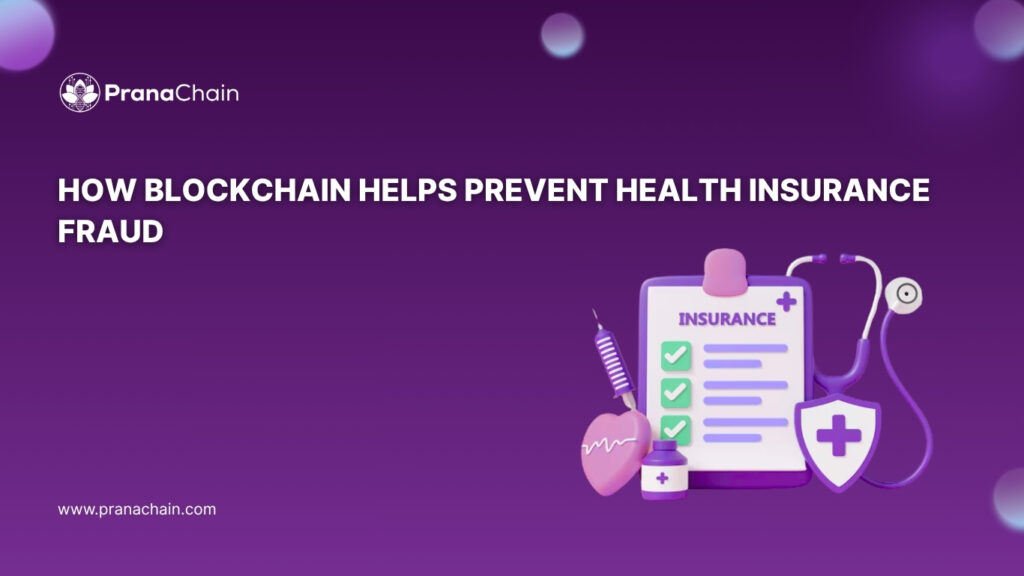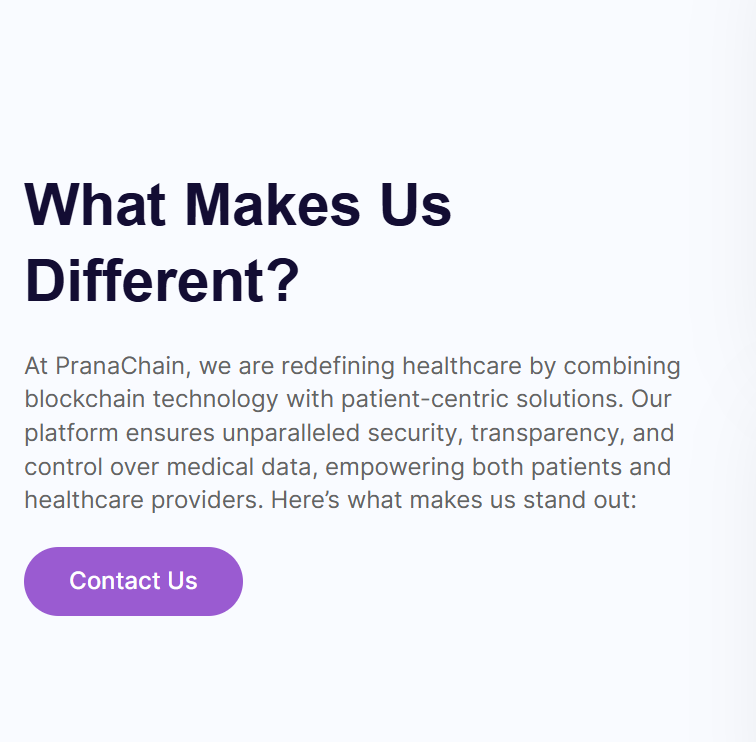
Blockchain prevents health insurance fraud by eliminating the vulnerabilities that fraudsters often exploit in traditional healthcare systems. The health insurance industry loses billions of dollars every year due to false claims, identity theft, and data manipulation. Pranachain leverages blockchain to create an ecosystem of transparent, immutable, and verifiable health data that reduces fraud at every step.
What Is Health Insurance Fraud?

Health insurance fraud refers to any deceptive action taken to receive unauthorized benefits from a health insurer. It can come from:
- Patients who might fake symptoms or submit false information
- Healthcare providers, who may bill for services not delivered
- Insurers or third parties involved in unlawful claim denials or mismanagement
Fraud increases insurance premiums, disrupts care delivery, and places an enormous financial burden on healthcare systems. According to the National Health Care Anti-Fraud Association (NHCAA), fraud costs the U.S. system over $68 billion each year.
Traditional Systems vs Blockchain in Fraud Detection

The Problem with Traditional Systems
Most health data infrastructures today are outdated and siloed. Claims data often moves through multiple layers without a secure or unified system. This leads to
- Duplicate or mismatched data across institutions
- Weak identity verification processes
- Missing or falsified audit trails
These gaps open the door for fraud to flourish.
Blockchain Features That Prevent Health Insurance Fraud
1. Immutable Medical Records
Once medical data is stored on a blockchain, it cannot be edited or deleted. Every update or addition is recorded as a new block with a timestamp and digital signature. This makes it impossible for bad actors to backdate claims or manipulate diagnoses after treatment.
2. Transparent Claim Histories
Blockchain acts as a shared source of truth. All authorized parties insurers, providers, and regulators can view the same claim history, reducing data conflicts and spotting inconsistencies quickly.
3. Smart Contracts for Automated Verification
Smart contracts allow insurance providers to set rules for claim approvals. For example:
- If a diagnostic test and treatment don’t align, the claim is rejected
- If a claim has already been paid out by another insurer, it’s blocked
This drastically reduces manual auditing time and enhances accuracy.
4. Identity Verification with Decentralized IDs
One of the most common types of fraud is identity theft. With blockchain, each user is assigned a decentralized digital identity (DID) linked to encrypted health data. Patients have complete control over who accesses their records and for what purpose.
Patient and Insurer Benefits of Blockchain-Based Fraud Prevention

For Patients
- Data Control: Patients can grant and revoke access to their health data
- Fewer Delays: Faster processing of genuine claims
- Lower Premiums: Reduced fraud means less financial burden passed on to patients
For Insurers
- Real-Time Validation: Detect and stop fraudulent claims instantly
- Reduced Legal Risk: Transparent data trails simplify dispute resolution
- Cost Savings: Fewer resources needed for fraud investigations and audits
Why Pranachain Is a Leader in Blockchain-Based Healthcare Security

Pranachain provides a blockchain infrastructure tailored for the healthcare ecosystem. Its focus on compliance, security, and interoperability ensures that insurers, doctors, and patients can collaborate in real-time while reducing fraud.
With features like
- Consent-based data sharing
- End-to-end encryption
- Smart contract integrations
- Decentralized identity layers
Pranachain delivers both security and efficiency at scale.
Real-World Example: Blockchain Reducing Insurance Fraud
A pilot study by the National Health Service (NHS) in the UK used blockchain to monitor prescription claims. Within six months, they reported:
- A 23% drop in duplicate claims
- Faster claim processing by 40%
- Increased trust among participating providers
As more insurers and healthcare systems adopt blockchain, its impact on fraud prevention will grow.
The Growing Market for Blockchain in Health Insurance
According to MarketsandMarkets, the blockchain healthcare market is projected to reach $5.4 billion by 2026, up from $1 billion in 2021. A large part of this growth is driven by the demand for fraud prevention and secure data management.
Conclusion: The Future of Secure, Fraud-Free Health Insurance
Blockchain prevents health insurance fraud by transforming how data is recorded, shared, and verified. It creates an ecosystem where trust is built into the infrastructure. With Pranachain, health data becomes
- Unalterable
- Transparent
- Secure
This not only stops fraud but also improves the overall efficiency and fairness of the healthcare system. The future of health insurance depends on trustless, transparent systems, and Pranachain is leading that charge.

